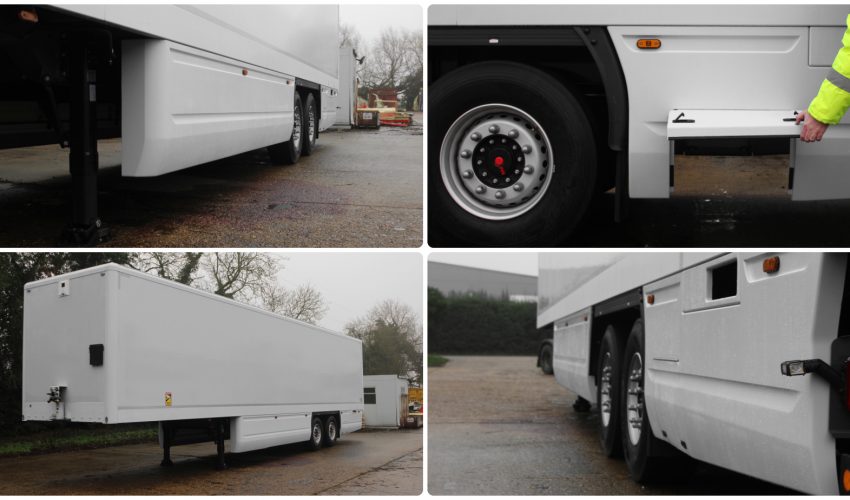How Aerodyne are driving amazing results with trailer aerodynamics

It’s all too easy to find bad news related to transport and fuel at the moment. So here’s a run through the success we’re having as a nation when it comes to truck and trailer aerodynamics and how Aerodyne’s role is at the heart of it.
Among the summits and targets and demonstrations, there’s a little glimmer of good news related to the transport sector and emissions. It’s that the UK is ahead of the rest of Europe when it comes to aerodynamics and HGV trailers.
The main reason we’re leading the charge on this issue is that we operate larger trailers than most European countries. Our trailers often extend to 5 metres high, where the majority of European trailers are at their mandated 4 metre height. As it happens, 4 metres is the average height of a truck and so, immediately, you can see the problem with our taller ones: there’s nothing less aerodynamic than a truck cab with a metre of ‘box’ sticking up above it.
We have no choice but to get better at streamlining. Luckily, here at Aerodyne, that’s our specialist subject.
What do we mean by aerodynamics?
Aerodynamics is all about the way in which air moves around a solid object. As it clearly can’t pass through anything, it tends to tumble and spin when it is disturbed by the object passing through it, especially when it does so at speed. All this disturbance creates drag which, in turn, slows the object and, in this case, means it uses more power – or fuel – to maintain its speed.
However, when we reduce this drag, we don’t just save on fuel, we also cut CO2 emissions which further makes the case for aerodynamics to be used to best effect.
What are our options?
The main aim with aerodynamic kit is to shorten the ‘wake’ of air that travels behind the trailer. This reduces the drag and therefore improves fuel efficiency and reduces your CO2 footprint. We use double decker trailers because we know that they are more efficient per pallet than the single decker, but we obviously need to pay more attention to the aerodynamics of the whole vehicle in order not to lose this benefit.
One of the most obvious improvements we can make is to smooth the edges of the trailer, making them curved rather than square. This allows the air to travel smoothly over them rather than tumbling and being disturbed. We have various front deflectors, tapers, skirts and spoilers which can achieve this – the most innovative being our AEROMATIC® spoiler, developed in 2018 by our in-house R&D team. We’ve successfully helped brands such as Waitrose and Ocado make savings on their fleet with this development.
For the best results, we recommend a combination of various parts that we offer and tests showed this to be the case. If we test individual domes, tapers or skirts, the individual results are impressive but the impact of employing a whole aerodynamics kit outperforms them. This is down to the way aerodynamics work: the smoother the air, the less drag and the better the performance. As soon as there is even a tiny break for the air to tumble and be disturbed, this will immediately impact negatively on performance. The moral of this story is that the more kit you can add to a vehicle, the better your outcomes and savings will be.
How can we understand what improvements can be made?
We work with our clients to help model their best potential savings from aerodynamics before we design their ideal solution. We’ll start by auditing your fleet to set the current benchmark and see where improvements are needed. Our computer design models can then help us understand which solutions are right for you and we provide all our prospective clients with a potential fuel and CO2 saving calculation based on detailed CAD designs and our extensive experience in a wide range of aerodynamic solutions. Your return on investment is then clear and could be delivered in less than six months.
To find out more about how we can help you, get in touch at sales@aerodyneuk.com or call 01778 422000.
